A tiny ant is crawling aimlessly along the grey margin of my office program on my laptop screen, occasionally crossing into the lines of text like a cursor gone mad. It is one among many insects I have discovered in the jungle and also one of the smallest that I have seen during my stay here in this part of the Amazon rain forest near Puerto Maldonado in Peru. The size of them doesn’t fool me into believing they can’t cause me any harm though. I learned that today on my way to the fishing hole where I was planning to fish for piranha.
The group of us had stopped to observe a giant parasite tree. It is one of the largest I’ve seen yet. It’s thick, constrictor-like roots stretched and meandered along the jungle surface on the hunt for water to support its massive structure. A vine hung down and I, Tania the gringa wanna-be jungle girl in her rubber boots, decided to grab on and climb up a little ways. Not a great idea, I would soon find out.
This tree would have sprouted from a small seed that was consumed, carried and excreted by one of the various jungle creatures that normally navigates the high clutches of the jungle canopy…a caterpillar, bird, monkey? Then, a vine would have emerged from the seed and wound itself around its host´s branch-wrist like a shackle and then begun its descent down, down, down to the ground until it was close enough to reach through the fertile earth and lock itself in beside its intended victim. As sturdy and as straight as a pole, the vine now a stem, over the course of years, would have grown into its victim, spread roots around it and eventually enveloped it until the host tree was completely engulfed.
This is nature’s example of identity theft. In the end you would never know the host tree actually existed if it wasn’t for one clue. When the host tree isn’t required for stability any longer, the parasite tree goes in for the kill and slowly strangles it to death. Eventually the dead host decays within the core of the parasite tree until all that’s left in the end is a dark, gaping hole where the host tree once stood strong and thriving, a perfect home for a tarantula.
Sounds pretty harsh doesn’t it? Who would have thought trees could be so ruthless? But even they can be. The jungle isn’t always kind. Yes, it’s a beautiful, diverse place full of life, but it is also full of death. It’s survival of the fittest for all of its inhabitants.
Luckily, I got the upper hand with the little black ants today, but that’s because I wasn’t tied to the parasite tree like others had been tied to the justice tree back in the day. The justice tree is another of the Amazon’s merciless flora with an, “If you help me, I’ll help you.” type of agreement with another jungle inhabitant.
Many years ago punishment for brutal crimes was to be tied to the justice tree, hence the name. At first glance being tied to a tree doesn’t seem like harsh punishment for a severe crime like murdering someone. Imagine you’ve been condemned to sitting on the ground with your hands tied behind you and around the tree’s trunk. Then your punisher picks up a stick. You think they’re going to beat you with it, but they don’t. Instead they hit the trunk of the tree a couple of times. Ah, he’s got bad aim. Not quite. In fact, he knows very well what he’s doing.
This tree has a hidden secret. It looks like an innocent tree from the outside and some are very small like the one Ronal showed us on our jungle walk the first day. He exclaimed, “Be careful, don’t touch that tree!” as I walked past to take my spot in a semi-circle around it. I looked at it curiously and asked him, “Is it poisonous?” He said, “No.” Then I wondered out loud, “Ok, what’s the deal with it then?” He said to look closely at its stem. There were a few small red ants navigating the surface.
‘Oh, of course, I don’t want to squash any.’ I thought to myself. Ronal said they were fire ants which can cause quite a sting. Much more than that if there are multitudes of them and in that case, they have the ability to kill.
The stem of the karma tree is actually hollow. A perfect home for an insect don’t you think? That’s exactly the deal between the red fire ant and the karma tree. In exchange for the tree’s protection, the ants can make their home inside the hollow stem. Smart tree! It’s an “if you scratch my back, I’ll scratch yours” sort of deal and it works. If there is any kind of external disturbance, the ants rush out to defend their property, like many of us would defend ours only these guys are ruthless. They are angry and do not have to worry about the repercussions, like life in prison or the death penalty, for murdering anyone, and they are not afraid to die in combat.
So, in fact the punisher with the stick would know exactly what they were doing. They wouldn’t have to hit you with it for you to learn your lesson. No, they leave it up to the ants to teach you. Thousands of ants would swarm out of a good sized tree and have you begging for mercy. Depending on the severity of your crime you could be left sitting there for a couple of hours or up to a few days. Usually it would only take three days for the ant venom to kill you.
If your crime was simply picking on your little brother or sister, your parents wouldn’t resort to the extreme punishment of the karma tree. Instead they might take you out to the back yard jungle, pick up a poison ivy stem, pull down your pants and whack your bottom with it. You would end up with a good stinging rash on your behind – definitely a harsher and more lingering punishment than a spanking. The jungle children had it tough!
The trees in the jungle have developed some smarts to protect themselves, and their fruit, from animals such as monkeys. One variety of palm tree called the wicumba palm grows spikes on it’s trunk to make it near impossible for a monkey to climb it.
The monkeys find other ways though. They are quite clever, not to mention naughty. I found that out on my first day in the jungle when I left my room key unattended near a stump. Maruka, the resident monkey, took notice of it and grabbed it with her tail. Luckily, I caught up with her and retrieved my key before she was able to climb any higher with it.
Although the wicumba spikes were a hindrance to the monkeys, they were more of a useful tool to humans, particularly to aid in hunting practices. Some of the wicumba trees grow spikes up to eight inches long. Furthermore the spikes are strong and extremely sharp. Ronal had us gently touch the tip. Yes, they certainly were.
You’ve heard of poisoned blow darts, right? There was a scene in Raiders of the Lost Ark where the indigenous people were blowing them at Indy as he tried to escape the jungle and his rival, Belloq, with the Chachapoyan Fertility Idol. Coincidentally enough, that part of the story actually took place in Peru.
The indigenous people were likely blowing wicumba spikes at Indy and they would have been dipped in very toxic frog venom. It’s also what they would have used to hunt jungle prey such as wild boar. It would kill their prey very quickly, but how would the indigenous people eat the infected meat without being poisoned themselves? Actually, it’s not the meat that is infected by the poison; it is the blood of the animal. When the animal is pierced with the poisoned dart, the poison travels through the blood stream and upon reaching the heart the animal goes into cardiac arrest. So, to avoid being poisoned, preparation for consumption involved hanging the meat to drain the blood.
The jungle is full of flora and fauna with unique defense mechanisms and survival methods, some of which are kind of ruthless, but lucky for me the ants that filled my left boot weren’t the red fire ants from the karma tree. They were just tiny black ants like the ones that are crawling on my computer screen. There are three now, but that’s nothing compared to the number of them crawling around inside my left rubber boot earlier. I swiped at my leg with my hands and swore a little. When that did no good I pulled my boot off. They were on my sock and crawling up my calf. Eek! Shit! They stung. I wiped them off and smeared some of them into my sticky skin. Eventually, all that was left were black smudges or, if they were lucky, a few ants might have found their way back home. Once I was satisfied they were gone, I picked up my fishing stick and hurried up the trail to catch up to the rest of the group.
Ronal stopped us. It was time to collect some bait. He picked up some decaying wicumba palm fruit from the ground. Earlier, he had plucked some of this fruit from a cluster hanging in a tree. Then he skinned it with a knife and handed us each a sliver of the meat to eat. It tasted like coconut.
He said that after the fruit falls to the ground and begins to decay, a small larva will burrow its way through the hard outer shell and feed off the nut in the centre until it becomes a beetle. Then it burrows its way back out. The fruit Ronal had in his hands contained only one small burrow hole, which indicated larva entry, but no beetle exit.
Ronal held the fruit against a branch and began chopping at it with his machete.
When enough of the hard shell was cut away, he held it up for us to see. Sure enough there was a large, white larva in its centre. I held the chubby, ribbed larva in my hand.
Apparently they are good to eat raw and they taste like nuts. They are quite a delicacy here in Peru, but gross. It’s not something I would ever be excited about eating. It wasn’t slimy like fly maggots and it didn’t wriggle around like them either. It just lay curled up in the palm of my hand. I felt sorry for it and its upcoming fate as food for the piranha in the swamp.
The swamp was small and very shallow, but Ronal insisted there were some decent sized fish, including catfish, in it. I took a piece of red meat instead of the poor larva and hooked it onto my line.
It didn’t take long before I felt a bite on my line, or more like many bites. The submerged meat bounced around in the water and I could see a swarm of tiny fish pulling away at it. They were tiny piranha, just babies actually. I hate to see the damage a big one could do. Ronal insisted these weren’t the dangerous type of piranha that is common near Iquitos at the mouth of the Amazon. He also explained that piranha are more dangerous when the river is low. ‘Kind of like in this shallow swamp?’ I wondered as I watched the swarm of little fish gnawing away at the piece of meat on the end of my line.
When the water is low the fish are more condensed and with their keen sense of smell they swarm in on their prey together, tearing away at it with those tiny razor-sharp teeth. Apparently in low river conditions they can eat an animal as large as a horse in a matter of ten minutes. On the other hand, when the river is high they disperse out and are not much of a threat. Regardless, I still wouldn’t be keen on swimming in the Amazon, even in the midst of the rainy season when the waters flood the banks.
It is the beginning of the rainy season right now and when it rains it doesn’t just sprinkle, it pours! After a heavy rain during one night, I discovered the floating dock on the river was submerged. The next time I looked, it was beached way down the river.
But before and after the heavy rains, the most colourful sunsets grace this jungle paradise. Then night falls and the nocturnal creatures emerge.
During a night-time river excursion we spotted some white caiman, or small crocodiles, but don’t let their smaller size fool you into thinking they are less dangerous. Even the smallest ones can land you in the hospital. The white caiman, common to the river due to their ability to camouflage in the murky water, grow up to two meters in length. Black caiman grow much larger, up to six meters in length. They are a large reptilian species and, in this area, live in the darker waters of Sandoval Lake.
Caiman are nocturnal and come out at night to sit on the river banks or in the shallows of the water’s edge waiting for prey which is really anything. They are opportunists. We could see their eyes glowing in the beam of Ronal’s flashlight. We approached slowly. Some laid on the river bank and some were just visible above the surface of the water.
As we motored slowly up the river a different set of eyes shone back at us through the branches of a submerged tree. Upon closer inspection, I could see that it was a capybara, the world’s largest rodent. They look like guinea pigs on steroids, but with longer legs. This one was was only visible from the ears up. He was so still, likely scared and trying not to attract attention with the slightest movement.
For me the night excursions were the most adventurous. It was a little creepy, but my excitement surged at the thought of spotting any large spiders or snakes hiding under leaves, behind trees or slithering along the ground. I felt like Indiana Jones, only he wouldn’t be keen on seeing any snakes.
Slowly, I crept along the dark, wet trail in my jungle shirt. I can thank Duane for that. He gave me one of his dress shirts just for this purpose. It was loose fitting, but not too big. It was perfect for keeping the mosquitos away from my skin.
The jungle was a theater to a symphony of different pitched buzzes, croaks and whooping sounds, as I slowly and quietly crept along the dark trail behind my group. I scanned each side of the trail, with my head lamp, careful not to miss anything. Ronal said to hold the head lamp in my hand rather than strap it to my forehead, so the bugs wouldn’t fly in my face. Good point. The thought of it made me cringe. I shone my light over and under leaves, on sticks, tree trunks and scanned the dark, wet, leafy ground. The jungle was teaming with the activity of giant grass hoppers and moths, bugs that look like leaves and sticks, tiny frogs, huge spiders and more.
We were lucky enough to spot two snakes including a small common snake sitting on a leaf and a rainbow boa constrictor slowly slithering through the dead leaves and low lying ground cover.
The moon’s muted glow beamed down all around through the jungle like a spot light searching out the star of the show, but there were many. The rain roaring down right now, as I sit in my bungalow, is the crowd’s applause. For many of these creatures the show will carry on until the sun comes up. They are nocturnal and will find a place to hide or sleep until the next night fall. The same applies to the nocturnal aquatic creatures that navigate the river’s edge.
It was the caiman that concerned me the most on the day we kayaked down the murky Rio Madre de Dios. You can’t see them underneath the muddy waters. I had asked Ronal about their tendancies a little late after we had already left the dock with our kayaks in tow. Earlier he had asked me if I wanted to use the double kayak instead of the single one. He said the single one is a little tipsy and that the double kayak would be more stable. Even with his warning, I insisted on the single one since kayaking isn’t foreign to me. A river that eventually flows into the Amazon, however, is and I didn’t think about the habits of the caiman until we were already on our way.
I asked Ronal, “So where do the caiman hide during the day?” He casually replied, “Oh, on the bottom of the river or in the jungle.” Ah, I see. Hmmm. Then I asked him, “So, how long can they hold their breath before they come up again?” Ronal guessed, “About six or seven mintues.” Great. I cringed at the thought of one surfacing next to me while I was sitting in my tipsy kayak floating down the river.
Carefully, I climbed onto my little bright green kayak and began to paddle towards the centre of the river. It wasn’t tipsy at all and I smiled and thought to myself, ‘Yep, I’m in Peru, sitting in a kayak, floating down a river which will eventually flow into the almighty Amazon. How cool is that?”
I even swam in the river after Ronal insisted I wouldn’t be dragged in and eaten by a hungry caiman. The water was warm and easy to dip into. The sand was fine between my toes. I relaxed and let the current take me a little ways.
I gazed at the tree tops on Monkey Island while I floated and tried to spot one of it’s primate inhabitants, but I couldn’t. What’s Monkey Island all about? That’s a whole other post.
Check out my Puerto Maldonado jungle Flickr gallery



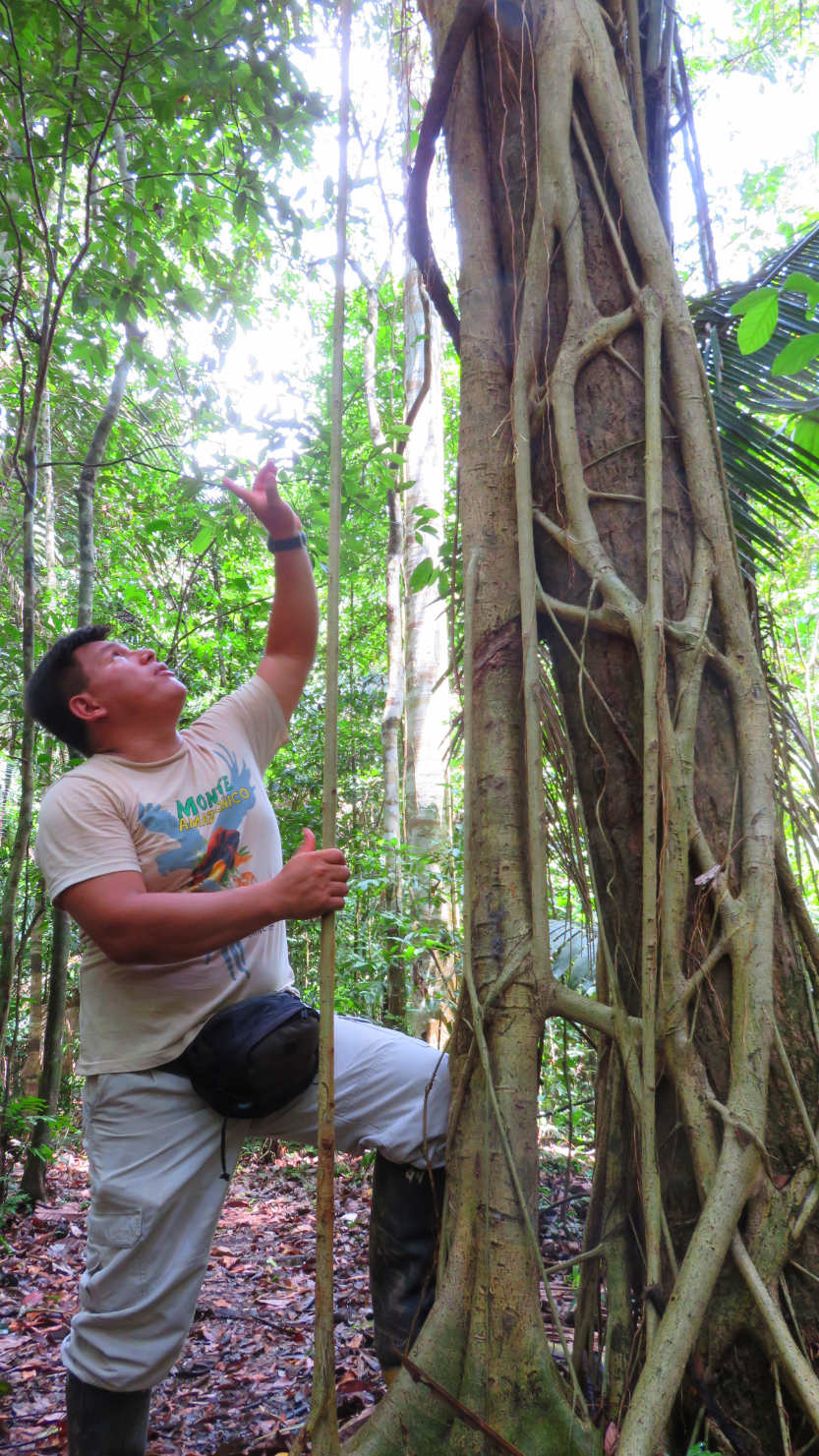
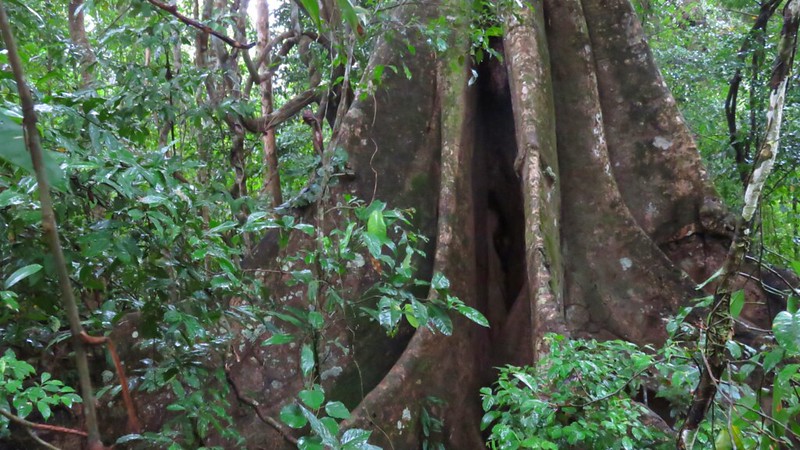
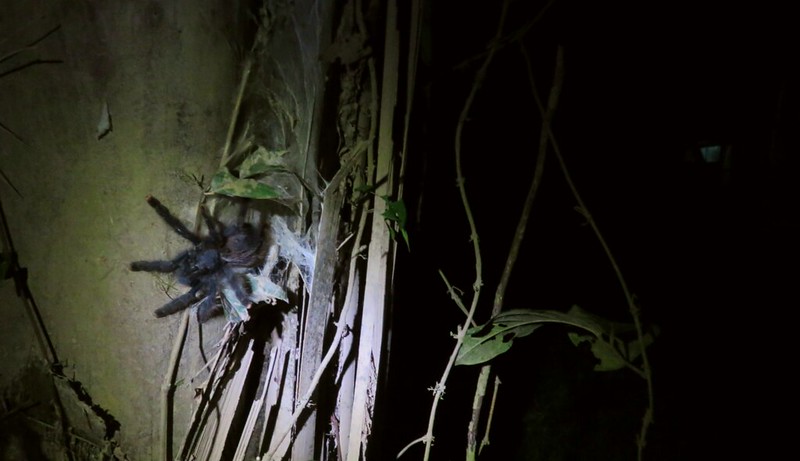
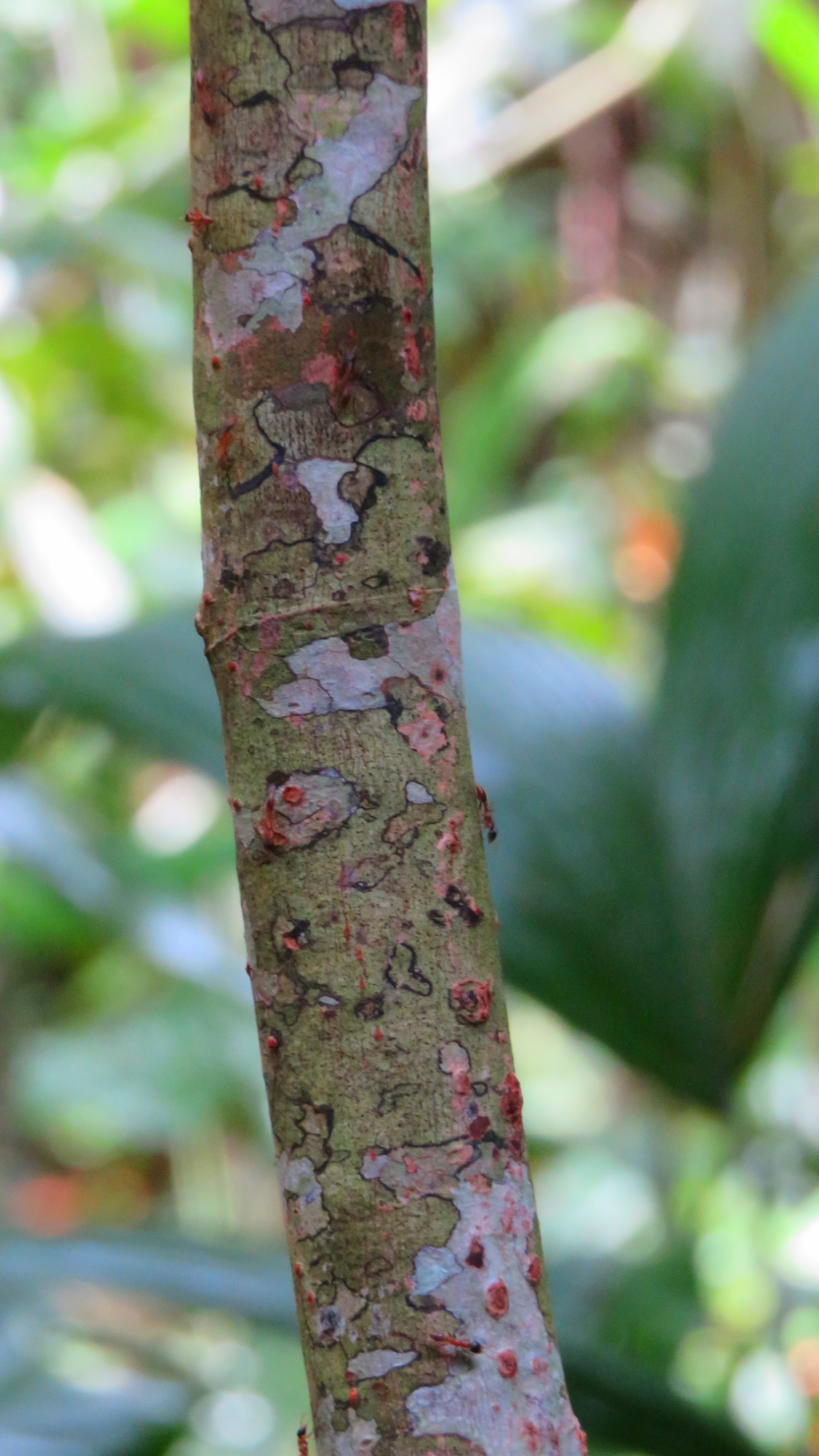
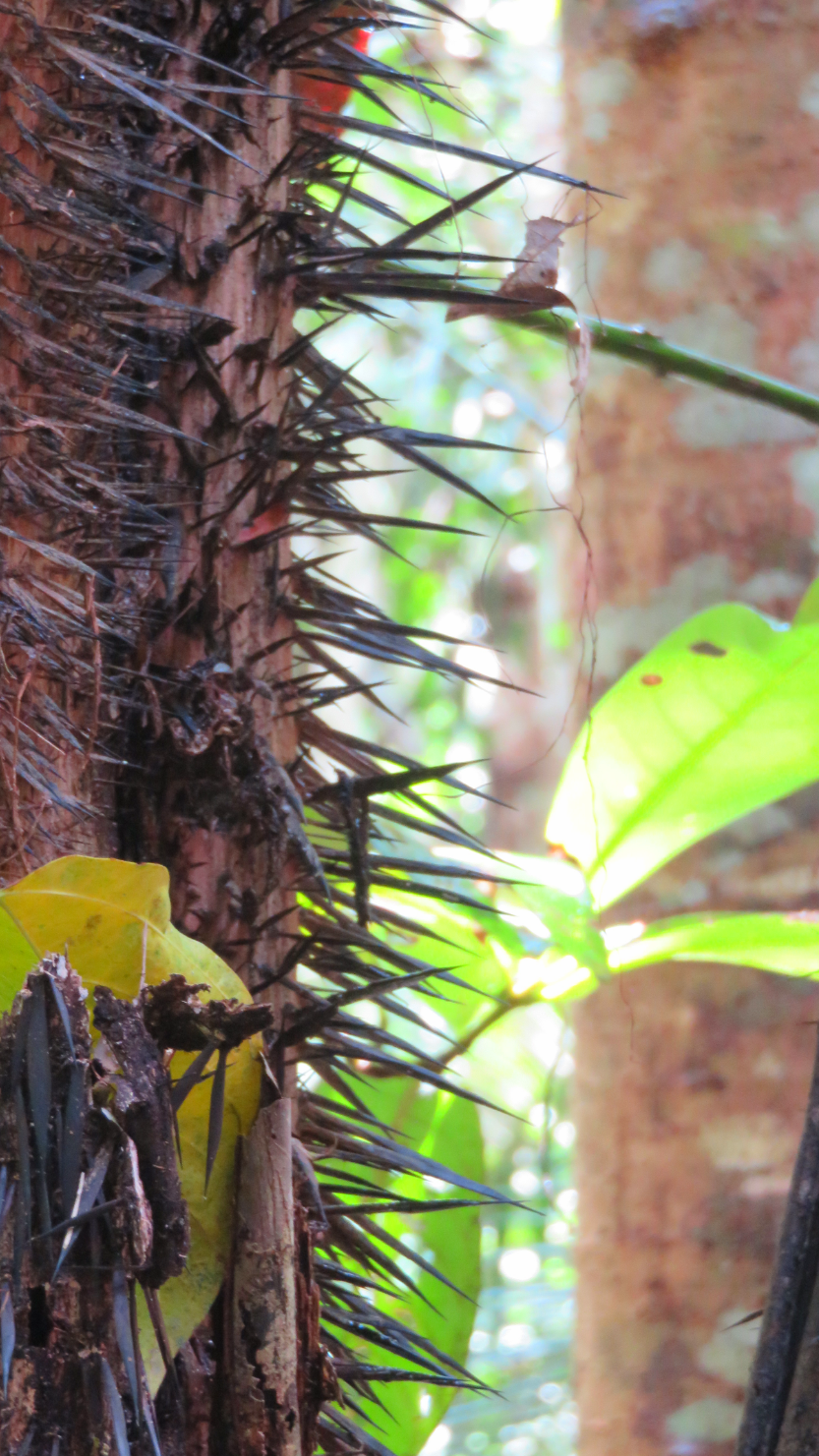
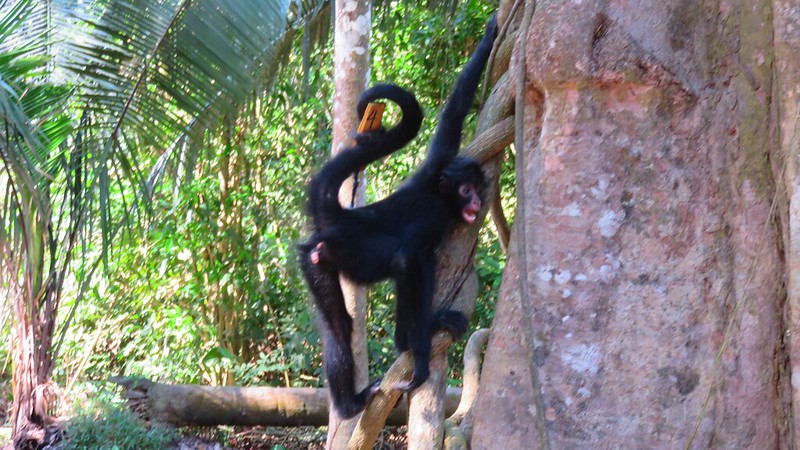

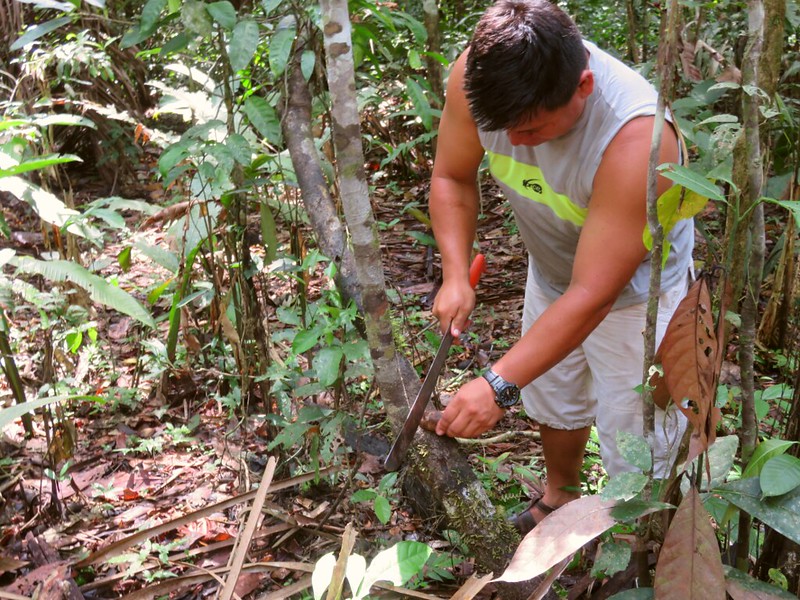

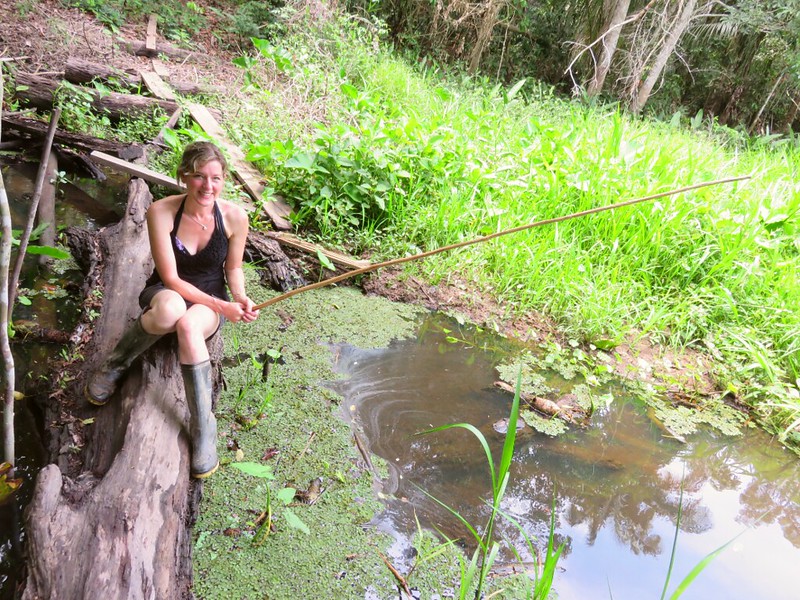
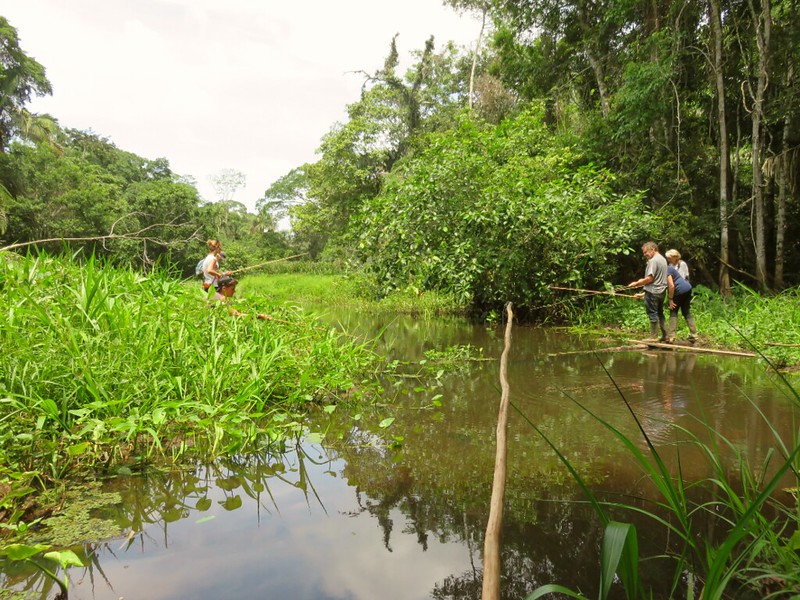
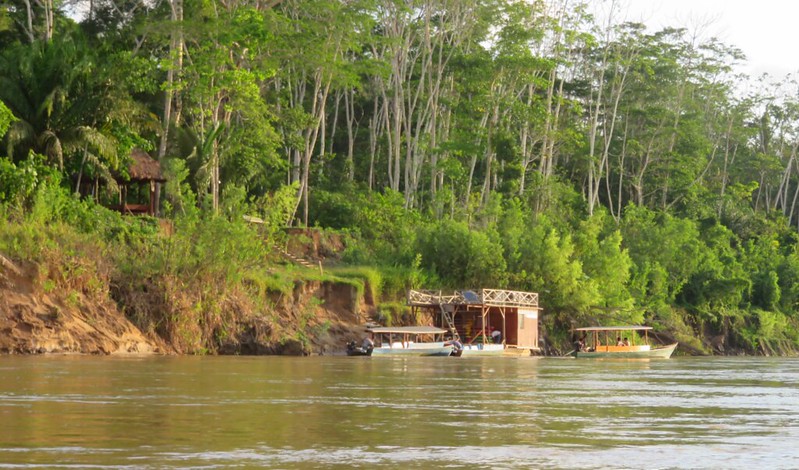
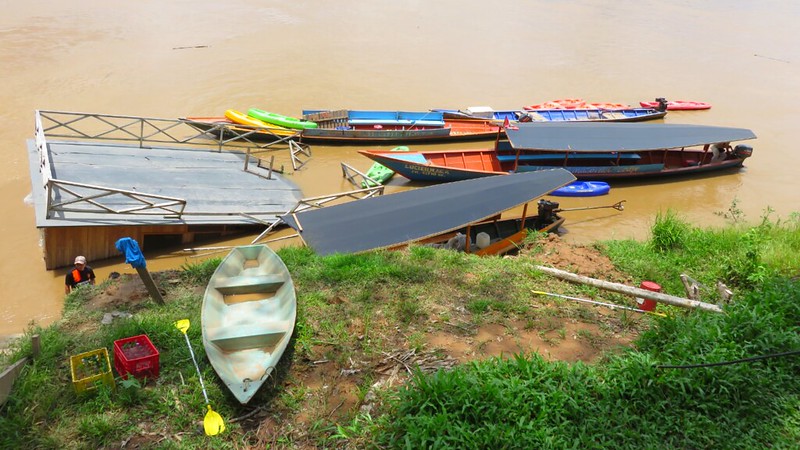

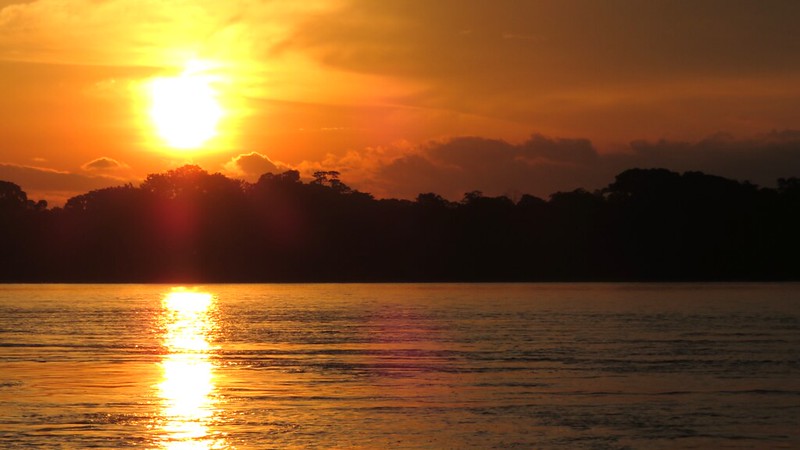
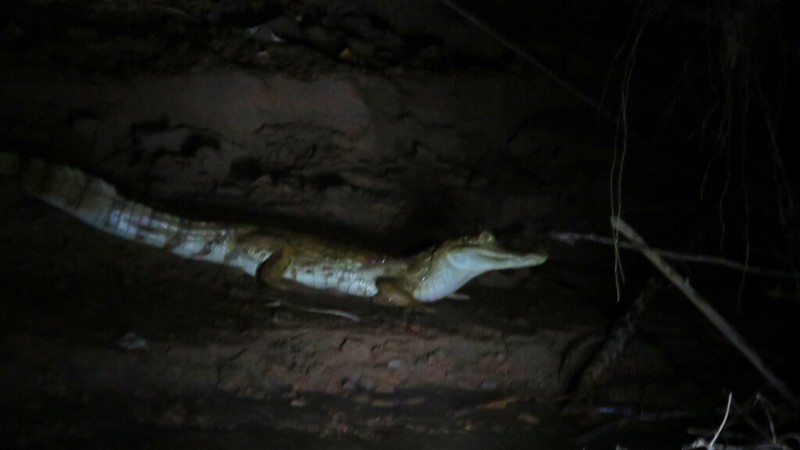


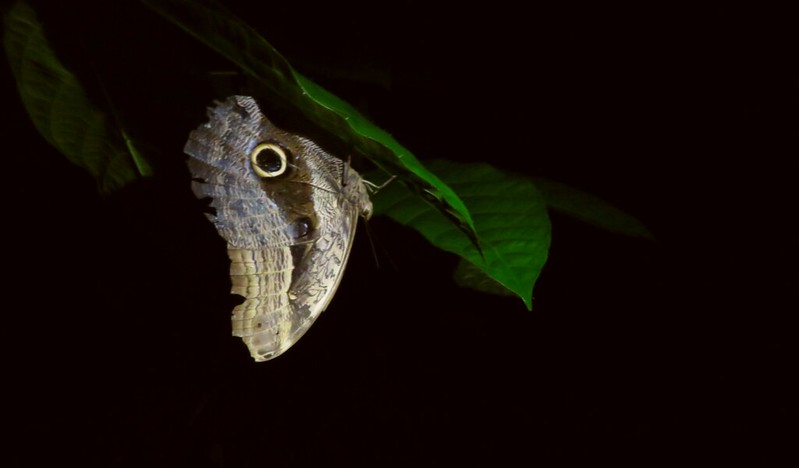
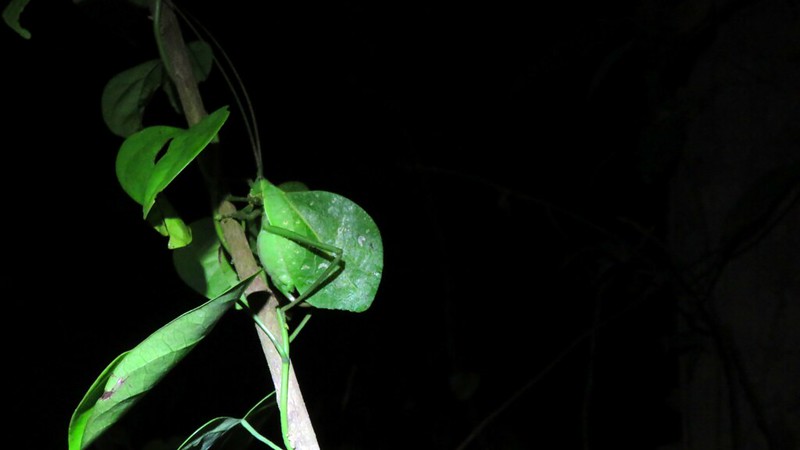
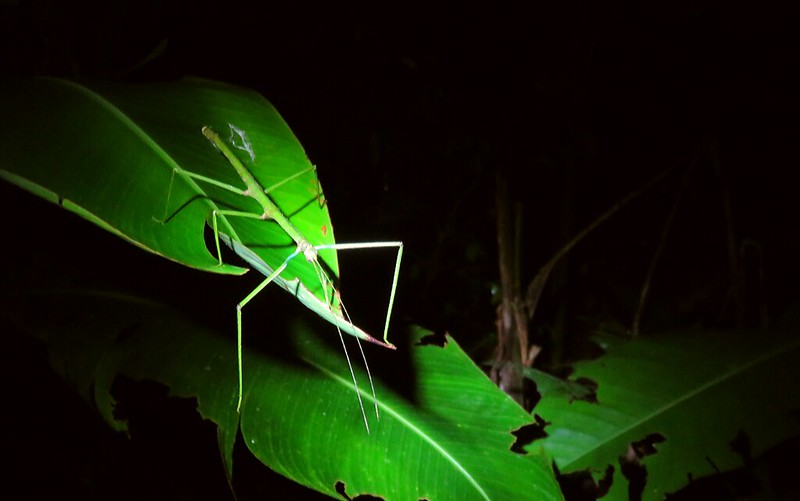
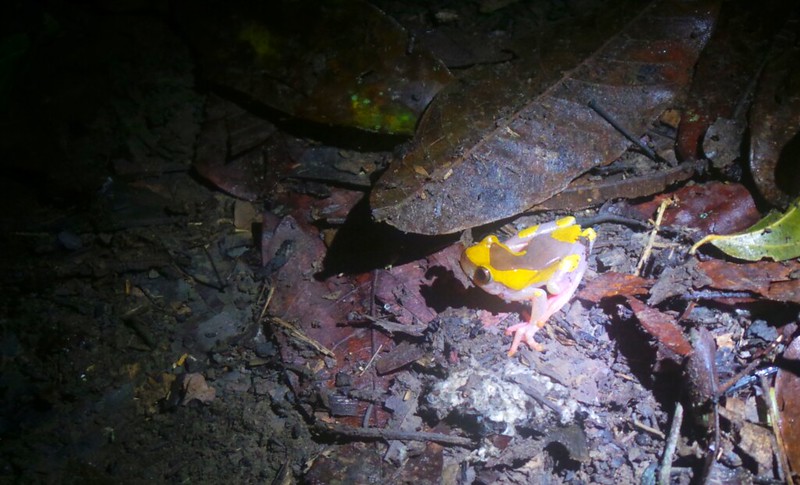


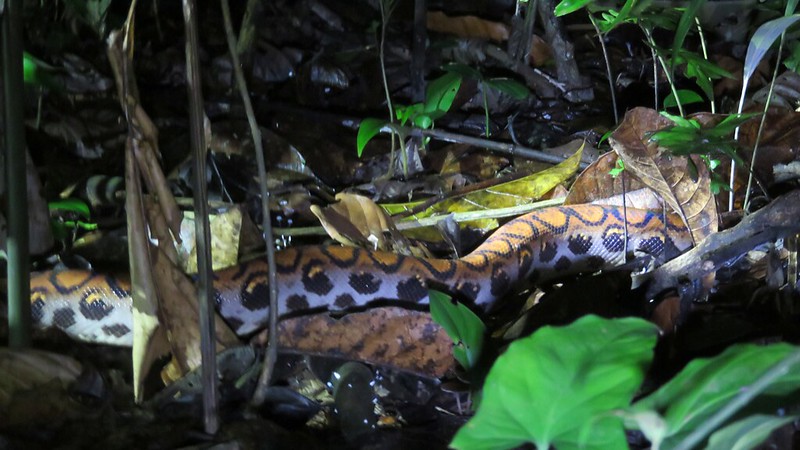

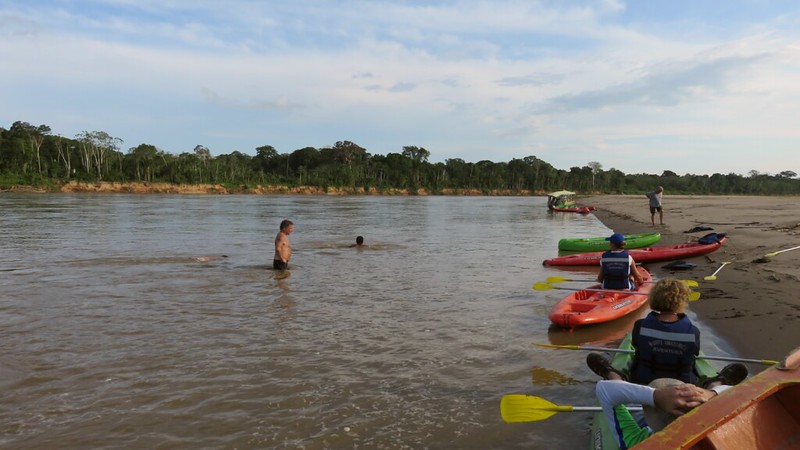
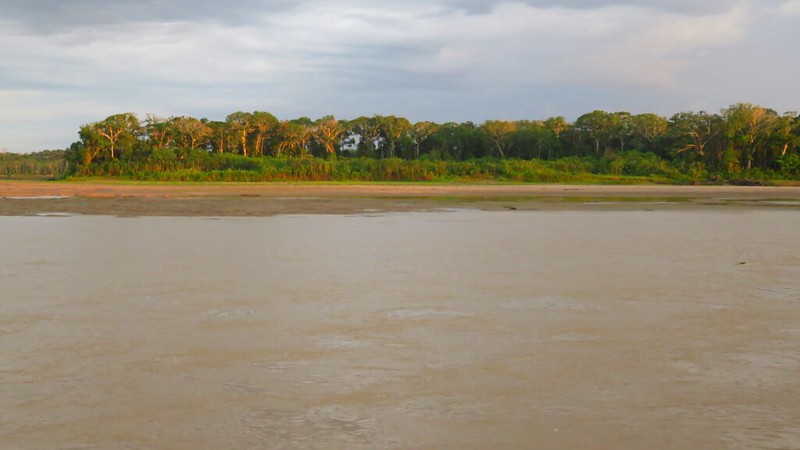
1 comment
EXCELENTE – ENJOYABLE AND IMFORMATIVE